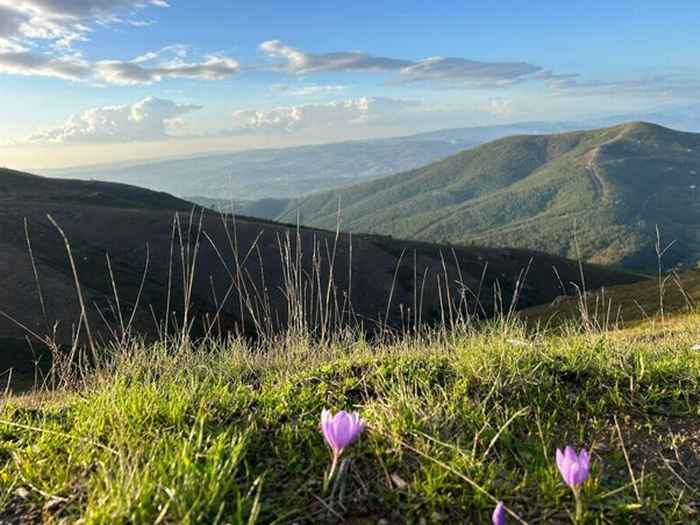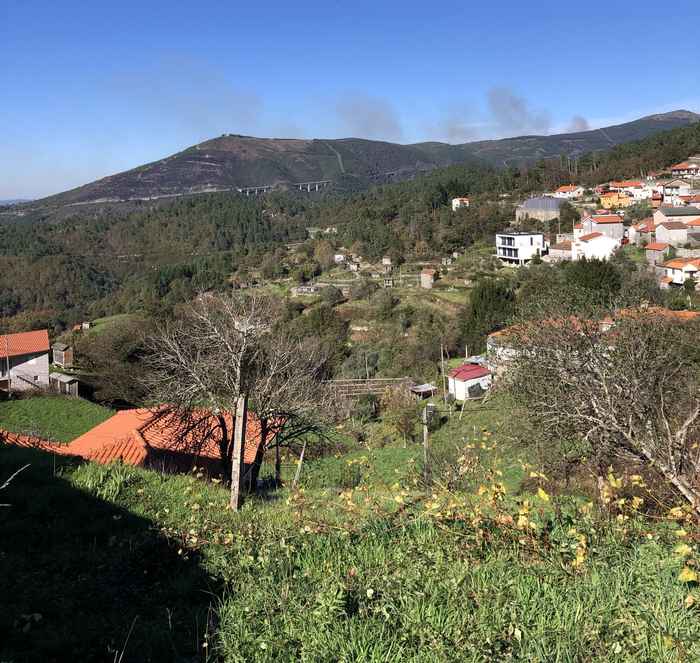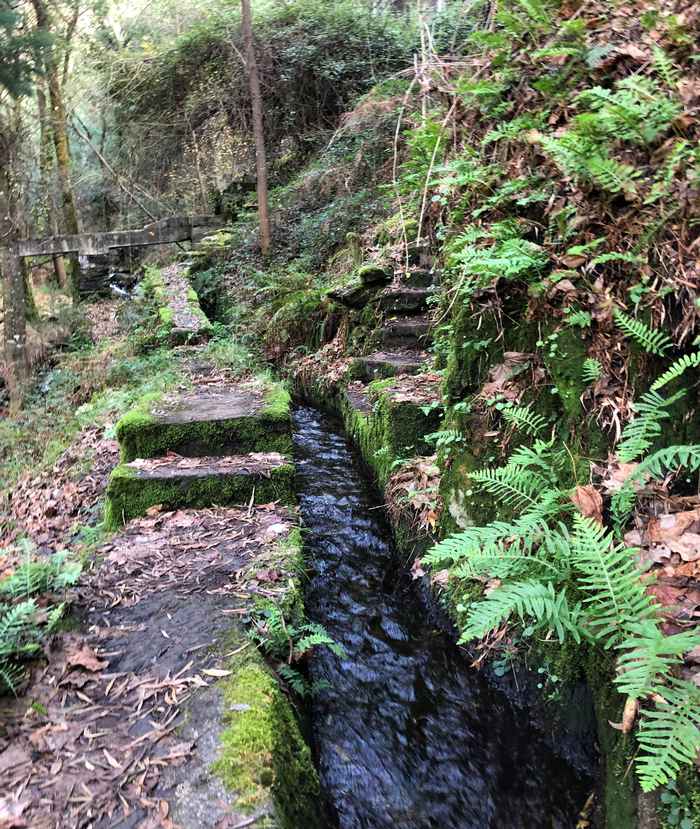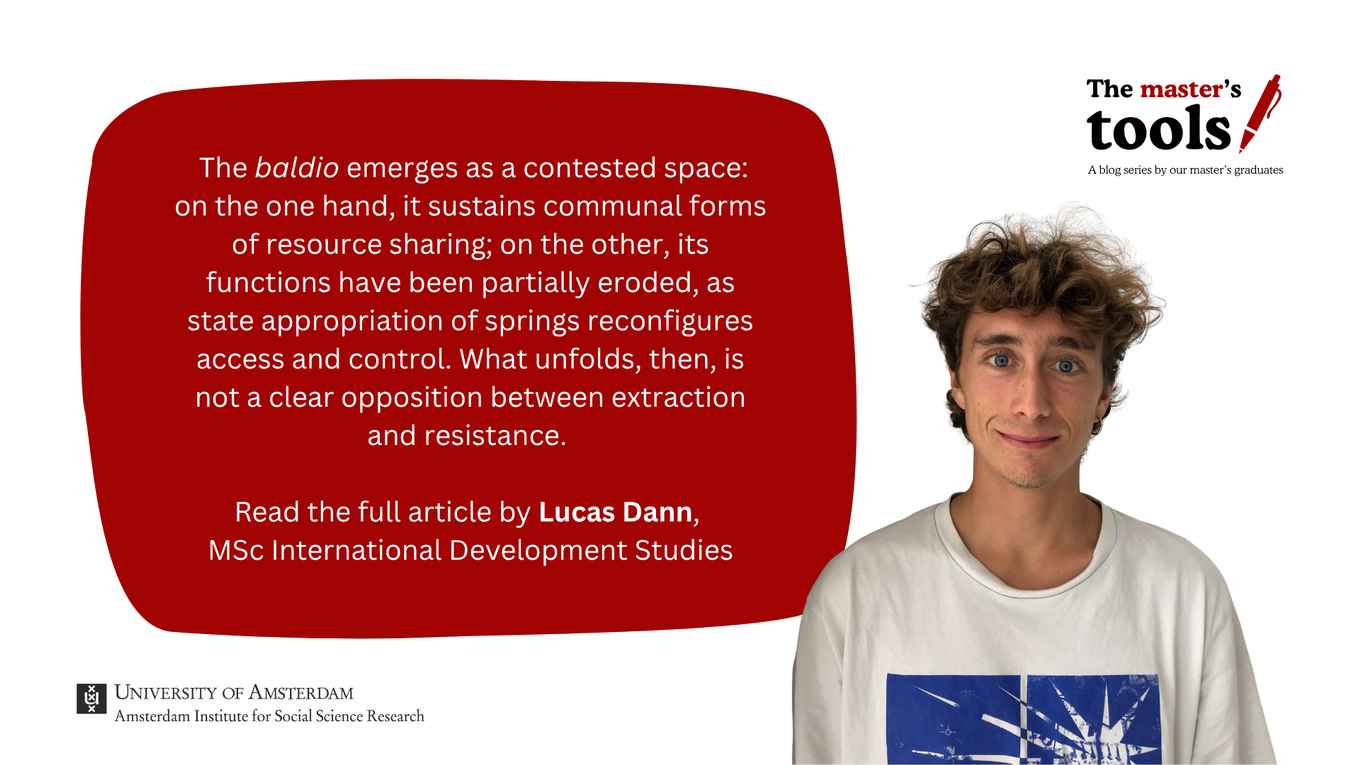Extraction and community-based practices entangled by water
Blog by Lucas Dann
23 October 2025

Ansiães, villages and commons
Ansiães is a small parish in Northern Portugal, where granite houses rise from a river valley. Three features dominate the landscape: trees, fields, and water. Beyond the village, a mountainous area fills the horizon, collectively owned by the compartas/es — the villagers of Ansiães. As community members, they have the right to manage and benefit from the mountain’s resources. The mountain, known as the baldio, has belonged to the community since the Middle Ages, except for a brief period under the Salazar dictatorship. For generations, the forest has sustained, among other actors, farmers and shepherds living in the valley, they and compartas/es more generally caring for the land in return. Until the mid-20th century, family farmers relied on baldios as commons that complemented private agriculture, providing pastures, fertiliser, wood, and sometimes cultivated land to sustain collective livelihoods.

Conflicting meanings of water
As a central focus of my research, I tried to understand how water flows through Ansiães. I studied three distinct water flows. First, I looked at water as a communal resource, a salient example being levadas, traditional community irrigation systems developed by villagers since the XVII century and which are used by farmers to water their fields. The communal use of the levadas is governed by specific rules, shaped by the kind of levada and the season in question. Farmers are responsible for the functioning of the system, depending on each other for the use and maintenance of the levadas.

Second, I engaged with villagers’ access to water through private catchment systems in their homes and fields. For example, some farmers without access to levadas irrigate their fields using their own water springs. Others meet household needs by digging wells or boreholes.
Third, I studied state control of (certain) water infrastructures. In 2015, state-led concession processes culminated in a situation whereby the state-owned company Águas do Norte took over management of the village household water system from the municipality. Household water, which originates from the communal baldio, is hereby extracted by the company and sold to villagers. Discontent with this situation was evident during my time in Ansiães: villagers reported that household water prices had tripled since Águas do Norte’s arrival, many experiencing water shortages and the company being accused of failing to properly maintain the water network.
The way water is managed shapes how people relate to it. Through levadas and private catchments, villagers draw from rivers and springs in ways that sustain a sense of control. By contrast, Águas do Norte restricts local management, making it harder for communities to organise around issues like rising prices or poor service, while commodifying water and weakening place-based ties to local sources. This shift also disrupts their relation with the baldio, as the link between the commons and household supply becomes less visible. Conversations with compartes/as showed that they attribute different meanings to water across communal, private, and state-controlled settings — even though the origins of the waters are the same.

Conclusion: Entanglements, water and extractivism
In this short post, I have aimed to show how in the same spaces, state-controlled systems, which are arguably characterised by extractive practices, in the sense that water from the baldio is commodified and sold back to villagers, are entangled with more localised processes of water management, such as private water supply creation by people who cannot (fully) afford the household water system.
In conclusion, how do processes of extraction become entangled with practices that resist them? In Ansiães, compartas/es engage with both extractive infrastructures — the water system provided by Águas do Norte — and with place-based practices such as levadas and private catchment systems. The baldio thus emerges as a contested space: on the one hand, it sustains communal forms of resource sharing; on the other, its functions have been partially eroded, as state appropriation of springs reconfigures access and control. What unfolds, then, is not a clear opposition between extraction and resistance.